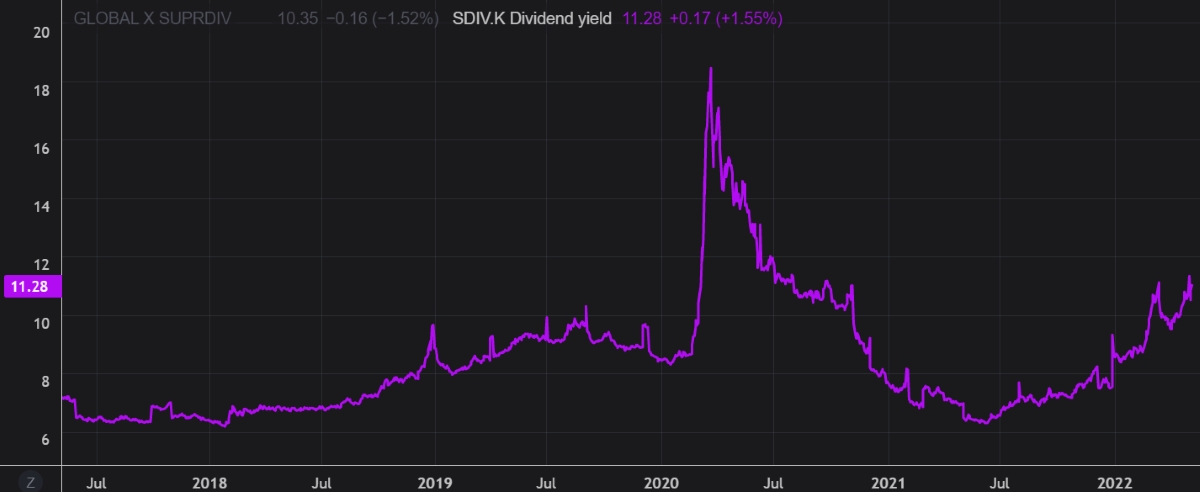

Finance
How To Get A $1 Million Dollar Business Loan?
Modified: February 21, 2024
Learn how to secure a $1 million dollar business loan in the finance industry. Our expert tips and strategies will help you achieve your financial goals.
(Many of the links in this article redirect to a specific reviewed product. Your purchase of these products through affiliate links helps to generate commission for LiveWell, at no extra cost. Learn more)
Table of Contents
- Introduction
- Understanding the Requirements for a $1 Million Loan
- Researching and Selecting the Right Lender
- Preparing a Comprehensive Business Plan
- Gathering and Organizing Financial Documents
- Assessing Collateral and Personal Guarantees
- Applying for the Loan
- Reviewing and Negotiating Loan Terms
- Closing the Loan and Utilizing Funds
- Conclusion
Introduction
Securing a $1 million business loan can be a significant milestone for entrepreneurs and small business owners. Whether you are looking to expand your operations, invest in new equipment, or launch a groundbreaking project, having access to substantial funding is essential to fuel growth and achieve your financial goals.
However, obtaining a loan of this magnitude is no easy task. Lenders have stringent eligibility criteria and thorough due diligence processes to mitigate their risks. To increase your chances of success, it is crucial to understand the requirements and take necessary steps to prepare a strong loan application.
In this article, we will explore the process of acquiring a $1 million business loan and provide valuable insights on how to navigate through it successfully. From researching and selecting the right lender to preparing a comprehensive business plan, we will cover all the key aspects you need to consider. So, let’s dive in and discover the roadmap to securing that coveted $1 million loan!
Understanding the Requirements for a $1 Million Loan
Before embarking on the journey to secure a $1 million loan, it’s essential to have a clear understanding of the requirements set forth by lenders. These requirements typically vary based on the type of loan and the lender’s risk appetite. Here are some key factors to consider:
Creditworthiness: Lenders will assess your credit history, both personal and business. Maintain a good credit score and address any negative marks or outstanding debts to increase your chances of approval.
Financial Statements: Prepare comprehensive financial statements, including cash flow statements, profit and loss statements, and balance sheets. These documents showcase your business’s financial health and stability.
Business Plan: A robust and detailed business plan is crucial when seeking a substantial loan. Outline your business strategy, market analysis, revenue projections, and growth plans.
Collateral: Lenders may require collateral to secure the loan, especially for large loan amounts. This can be in the form of real estate, equipment, inventory, or other valuable assets.
Cash Flow: Demonstrating a consistent and healthy cash flow is essential. Lenders want assurance that you can meet your loan repayment obligations without jeopardizing your business’s sustainability.
Experience and Track Record: Lenders often consider the entrepreneurial experience, industry expertise, and track record of the business owner. Having a solid history of success in a related field can increase your chances of approval.
Personal Guarantees: As a business owner, you may be required to provide personal guarantees, making you personally liable for the loan in case of default. Carefully consider the implications of such guarantees before proceeding.
It’s worth noting that these requirements are not set in stone and can vary from lender to lender. Some lenders may have more flexible criteria, while others may have additional conditions. Therefore, conducting thorough research and understanding the specific requirements of potential lenders is crucial.
By familiarizing yourself with the requirements, you can proactively address any areas that may hinder your loan approval. It also helps you prepare a strong loan application and position yourself as a reliable and credible borrower.
Researching and Selecting the Right Lender
Once you have a clear understanding of the requirements for a $1 million loan, the next step is to research and select the right lender. Here are some key factors to consider during this process:
Types of Lenders: Start by understanding the different types of lenders available to you. This can include traditional banks, credit unions, online lenders, private investors, or government-backed loan programs. Assess the pros and cons of each option to determine which best aligns with your needs and preferences.
Lender Reputation and Track Record: It’s vital to choose a lender with a solid reputation and a track record of successfully funding businesses. Look for reviews, testimonials, and case studies to gauge their credibility and reliability.
Loan Terms and Interest Rates: Compare the loan terms and interest rates offered by different lenders. Look for competitive rates and favorable repayment terms that align with your financial capabilities.
Loan Limits and Eligibility: Verify if the lender offers loans of the amount you are seeking and if you meet their eligibility criteria. Some lenders may have strict requirements specific to loan amounts, industry sectors, or business size.
Industry Experience: Consider lenders who specialize in your industry or have experience financing businesses similar to yours. They will have a better understanding of your unique needs and challenges.
Additional Services: Some lenders offer additional services such as financial advice, mentorship, or networking opportunities. These value-added services can be beneficial to the growth and success of your business.
Application Process: Evaluate the application process and determine if it is streamlined and convenient. Look for lenders who prioritize efficient and transparent processes.
Customer Support: Assess the quality of customer support provided by the lender. Clear and responsive communication is essential throughout the loan process.
Take the time to thoroughly research and evaluate multiple lenders before making a decision. Pay attention to the lender’s alignment with your business goals, their reputation, and their ability to provide the financial support you need. Remember, choosing the right lender is crucial to securing a $1 million loan on favorable terms.
Once you have identified potential lenders, it’s recommended to reach out to them for further discussions. Share your business goals, ask questions, and seek clarification on any concerns you may have. This will help you make an informed decision and give you confidence as you proceed with your loan application.
Preparing a Comprehensive Business Plan
A critical step in securing a $1 million loan is creating a comprehensive business plan. A well-crafted business plan showcases your vision, strategies, and financial projections, giving lenders the confidence to invest in your business. Here are the key elements to include in your business plan:
Executive Summary: Start with a concise overview of your business, highlighting its mission, values, and key objectives. This section should provide a snapshot of your company and grab the attention of the lender.
Company Description: Describe your business in detail, including its legal structure, products or services offered, target market, and competitive advantage. Highlight any unique aspects that set your business apart from competitors.
Market Analysis: Conduct a thorough analysis of your target market, identifying its size, trends, and growth potential. Demonstrate a deep understanding of your customers, competitors, and industry dynamics.
Organization and Management: Provide an overview of your management team, their qualifications, and relevant experience. Include an organizational chart to illustrate the structure and roles within your company.
Product or Service Line: Clearly explain your offerings, emphasizing the value they provide to customers. Describe any patents, trademarks, or copyrights associated with your products or services.
Sales and Marketing Strategy: Outline your sales and marketing plans, including your target audience, pricing strategy, distribution channels, and promotions. Provide details on how you will generate leads and convert them into customers.
Financial Projections: Present realistic financial forecasts, including income statements, balance sheets, and cash flow statements. Include key assumptions and explain how you arrived at your projections. Be prepared to discuss your revenue sources, cost structure, and profitability outlook.
Risk Assessment: Identify potential risks that may impact your business and explain how you plan to mitigate them. This shows lenders that you have thought through the potential challenges and have strategies in place to overcome them.
Appendix: Attach any supporting documents, such as resumes of key team members, market research data, supplier agreements, or legal documents related to your business.
It’s vital to tailor your business plan to the specific lender you are approaching. Research their preferences, review sample business plans they provide (if available), and incorporate any specific requirements they may have.
A comprehensive business plan demonstrates your professionalism, diligence, and ability to strategically manage your business. It increases your credibility in the eyes of lenders, enhancing your chances of securing a $1 million loan.
Gathering and Organizing Financial Documents
When applying for a $1 million loan, it’s crucial to gather and organize all the necessary financial documents. Lenders require these documents to assess your business’s financial health and determine your ability to repay the loan. Here are the key financial documents you should prepare:
Income Statements: Provide detailed income statements for the past few years, outlining your revenue, expenses, and net profit. These statements help lenders evaluate your business’s profitability and financial stability.
Balance Sheets: Include balance sheets that show your assets, liabilities, and equity at various points in time. These documents provide a snapshot of your business’s financial position, including its liquidity and solvency.
Cash Flow Statements: Prepare cash flow statements that demonstrate the inflows and outflows of cash in your business. This helps lenders understand your ability to generate and manage cash, a key factor in loan repayment.
Tax Returns: Submit your business tax returns, including all relevant schedules and forms. This helps lenders validate your reported income and assess your tax compliance.
Bank Statements: Compile bank statements for both your business and personal accounts. Lenders review these statements to analyze your cash flow, account activity, and financial behavior.
Accounts Receivable and Payable: Provide an aging report of your accounts receivable and accounts payable. This document shows outstanding invoices and bills, indicating your business’s ability to manage its cash flow and payment obligations.
Financial Forecasts: Prepare financial projections that outline your revenue, expenses, and cash flow forecast for the next few years. This demonstrates your ability to meet loan repayment obligations and sustain your business’s growth.
Personal Financial Statements: If you’re a small business owner, lenders may request your personal financial statements. These statements provide a comprehensive view of your personal assets, liabilities, income, and expenses.
Other Relevant Documents: Depending on your business’s nature, you may need to provide additional documents such as customer contracts, purchase agreements, lease agreements, or any other document that supports the financial health and stability of your business.
Organize all these financial documents in a systematic manner. Utilize folders, labels, and digital tools to ensure easy access and retrieval. Clearly label each document and make multiple copies as required.
Keep in mind that lenders may request additional documents based on their requirements and evaluation process. Be prepared to provide any additional information promptly and efficiently.
Gathering and organizing these financial documents demonstrates your organization, attention to detail, and commitment to transparency. It enhances your credibility as a borrower and streamlines the loan application process.
Assessing Collateral and Personal Guarantees
When seeking a $1 million loan, lenders may require collateral and personal guarantees to secure the loan. Collateral provides the lender with an additional layer of protection in case of default, while personal guarantees make the borrower personally liable for loan repayment. Assessing collateral and personal guarantees is crucial before proceeding with the loan application. Here’s what you need to know:
Collateral: Collateral is an asset or property that a borrower pledges as security for the loan. It can be real estate, equipment, inventory, or other valuable assets that have a cash value. Lenders may require collateral to mitigate their risk and ensure they have a means to recoup their funds if the borrower defaults on the loan. Assess the value and availability of potential collateral you can offer to secure the loan.
Appraisal: If providing collateral, it may need to be appraised by a professional to establish its value. The lender will determine the acceptable loan-to-value ratio based on the appraised value of the collateral. Ensure the appraisal is conducted by a reputable appraiser to ensure the accuracy and validity of the valuation.
Personal Guarantees: Personal guarantees are legally binding agreements that make the borrower personally responsible for loan repayment. It means that if the business is unable to repay the loan, the borrower’s personal assets can be used to satisfy the debt. Consider the implications of providing a personal guarantee, as it puts your personal assets at risk in the event of default.
Mitigating Risks: Before providing collateral or personal guarantees, evaluate the risks associated with defaulting on the loan. Assess the business’s financial stability, projected cash flow, and the potential impact on your personal finances. Consider alternative ways to secure the loan or negotiate the terms to minimize the level of collateral or personal guarantees required.
Legal Advice: Seek the guidance of legal professionals to fully understand the terms and implications of collateral and personal guarantees. Consult with a lawyer experienced in business lending to review the loan documents and ensure you are making informed decisions.
It’s important to carefully assess whether you have sufficient collateral and are willing to provide personal guarantees before proceeding with a $1 million loan. Consider the potential risks and evaluate your ability to meet the loan obligations. Remember that collateral and personal guarantees can provide a level of security to the lender, but they also come with inherent risks for the borrower.
Ultimately, the decision to provide collateral or personal guarantees should be based on a thorough understanding of the loan terms, your business’s financial stability, and your personal risk tolerance. Assess these factors carefully and make an informed decision that aligns with your financial goals and long-term business strategy.
Applying for the Loan
Once you have completed the necessary preparations, it is time to formally apply for the $1 million loan. The application process involves several key steps that you need to follow diligently. Here’s what you need to know:
Complete the Loan Application: Gather all the required documents and fully complete the loan application provided by the lender. Provide accurate and detailed information, ensuring it aligns with the financial documents and business plan you have prepared.
Include a Cover Letter: Consider attaching a cover letter that highlights the key strengths of your business, explains the purpose of the loan, and demonstrates your commitment to its successful repayment. Use this opportunity to showcase your passion and dedication to your business’s growth.
Follow Instructions and Deadlines: Carefully review the application instructions and adhere to any stated deadlines. Missing or overlooking important details may result in delays or even rejection of your loan application.
Communicate Clearly: Be prepared to communicate with the lender throughout the application process. Respond to their queries promptly, supply any additional information they may request, and demonstrate your willingness to cooperate.
Review the Loan Terms: Carefully review the terms and conditions of the loan before signing any agreements. Ensure you fully understand the interest rates, repayment schedule, fees, and any other associated costs. Seek clarification on any unclear or ambiguous terms.
Double-Check the Application: Before submitting your loan application, double-check all the information provided. Ensure there are no errors or inconsistencies that could raise red flags or affect the lender’s evaluation of your application.
Get Professional Assistance: If you are unsure about any aspect of the application process, consider seeking professional assistance from an accountant, business advisor, or lawyer. They can provide valuable insights and ensure your application is accurate and complete.
Be Patient: Keep in mind that the loan approval process may take time. Lenders need to review your application, conduct their due diligence, and make a decision based on their risk assessment. Be patient and prepared for potential delays.
Remember, each lender has their own evaluation criteria and decision-making process. Even if one lender rejects your application, it does not mean that others will follow suit. If your application is denied, consider reaching out to alternative lenders or exploring government-backed loan programs that may offer more flexible terms.
Applying for a $1 million loan requires careful attention to detail, timely communication, and thorough documentation. By following the application process diligently, you increase your chances of securing the loan you need to take your business to the next level.
Reviewing and Negotiating Loan Terms
Once you receive a loan offer for your $1 million loan application, it is crucial to carefully review and evaluate the proposed loan terms before accepting the offer. Reviewing and negotiating the loan terms allows you to ensure that the terms align with your business’s needs and financial capabilities. Here are some steps to consider:
Thoroughly Review the Offer: Carefully read through the loan offer, including the interest rate, repayment period, payment frequency, and any associated fees. Pay attention to any additional terms or conditions outlined in the offer.
Compare Multiple Offers: If you receive offers from multiple lenders, compare the terms and conditions they have provided. Assess the impact of various factors such as interest rates, loan duration, and repayment requirements on your business’s financial health.
Consider Total Cost of the Loan: Look beyond the interest rate and consider the total cost of the loan over its entirety. Take into account any fees, origination costs, and other charges that may add to the overall cost, impacting the affordability of the loan.
Negotiate with the Lender: If you have concerns or questions about the proposed terms, don’t hesitate to negotiate with the lender. Discuss areas where you may need more flexibility or request modifications to the terms that better suit your business’s needs.
Seek Professional Advice: Consider consulting with financial advisors or legal experts who can review the loan terms and provide you with insights and guidance. Their expertise can help you assess the fairness and reasonableness of the proposed terms.
Protect Your Interests: Ensure that the loan terms protect your interests and align with your long-term business goals. Pay attention to clauses related to prepayment penalties, default provisions, and collateral requirements. Seek changes or clarifications if necessary.
Evaluate the Repayment Schedule: Assess the feasibility of the proposed repayment schedule for your business. Determine if the monthly or quarterly payments fit within your projected cash flow and if they allow for future growth and expansion.
Document Any Changes: If you successfully negotiate changes to the loan terms, ensure that they are properly documented and incorporated into the final loan agreement. This will protect both parties and help avoid any future misunderstandings.
Remember, negotiating loan terms is not about trying to get the best deal at any cost. It is about finding a balance that meets your business’s needs while respecting the lender’s risk considerations. Be prepared to have open and constructive discussions with the lender to find common ground.
By reviewing and negotiating loan terms, you can ensure that the loan offer aligns with your business’s financial goals and viability. Always approach this process with careful consideration and seek professional advice when necessary.
Closing the Loan and Utilizing Funds
After reviewing and accepting the final loan terms, the next step is to close the loan and access the funds. Closing the loan involves fulfilling any remaining requirements and completing the necessary paperwork. Here’s what you need to know:
Provide Required Documentation: The lender may request additional documentation or information to finalize the loan. Ensure that you promptly provide all requested documents, such as insurance policies, legal agreements, or any other documentation necessary to meet the lender’s conditions.
Sign the Loan Agreement: Carefully review the loan agreement before signing it. Ensure that all the terms and conditions discussed and negotiated are accurately reflected in the agreement. Seek professional advice if needed to clarify any unclear provisions.
Meet Closing Conditions: Fulfill any closing conditions outlined by the lender, such as obtaining required insurance coverage, providing updated financial statements, or meeting specific verification requirements. This ensures that all the necessary conditions for loan disbursement are met.
Disbursement of Funds: Once all closing requirements are satisfied, the lender will disburse the loan funds according to the agreed-upon terms. Be prepared to provide the necessary bank account information for the direct deposit of the funds.
Utilize Funds Appropriately: Use the loan funds as outlined in your business plan. Be diligent in allocating the funds to the intended purposes, such as expanding operations, purchasing equipment, or financing projects. Properly tracking and managing the funds will help ensure their efficient and effective use.
Repayment Obligations: Familiarize yourself with the repayment terms, including the repayment schedule, frequency, and any associated fees. Establish a system to keep track of your loan repayment obligations and ensure timely payments to avoid any penalties or negative impact on your business credit.
Monitor Your Business Progress: Regularly review and assess the impact of the loan on your business’s financial health and performance. Monitor key metrics, such as cash flow, revenue growth, and debt service coverage ratio, to ensure that your business remains on track and can comfortably meet its repayment obligations.
Maintain Communication with the Lender: Keep an open line of communication with the lender throughout the loan period. Inform them of any significant changes or updates in your business operations and promptly address any concerns or issues that arise.
Closing the loan and accessing the funds marks the beginning of a new phase for your business. Diligently utilize the funds according to your business plan and ensure effective management of repayment obligations. By effectively managing the loan and maintaining a strong relationship with the lender, you can fulfill your business’s goals and set the foundation for future success.
Conclusion
Securing a $1 million business loan is no small feat, but with careful planning, preparation, and execution, it is attainable. Understanding the requirements, researching the right lender, and preparing a comprehensive business plan are crucial steps in the loan application process. Gathering and organizing financial documents, assessing collateral and personal guarantees, and applying for the loan diligently are essential to increase your chances of approval.
Once approved, reviewing and negotiating the loan terms ensures that they align with your business’s needs and financial capabilities. Closing the loan and utilizing the funds require fulfilling the necessary requirements, signing the agreement, and utilizing the funds appropriately according to your business plan.
Throughout this process, it is important to communicate clearly with the lender, seek professional advice when needed, and maintain a strong relationship with the lender. Regularly monitor your business’s progress, stay on top of repayment obligations, and maintain open lines of communication to ensure a successful loan experience.
Remember, securing a $1 million loan requires careful consideration of your business’s financial health, feasibility of repayment, and long-term goals. Assess all risks and benefits associated with the loan, and make informed decisions that align with your business’s growth and sustainability.
By following these steps and maintaining a strategic approach, you can increase your chances of securing a $1 million loan and propel your business toward new opportunities and growth.














